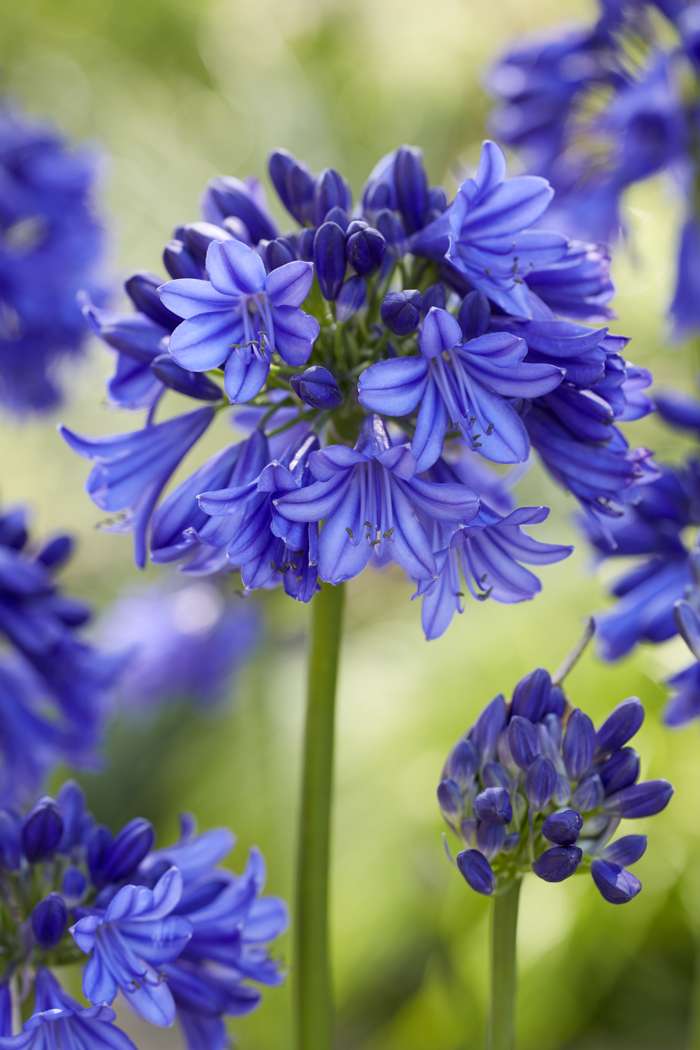Seasonal Agapanthus Care: Planning For Winter Season and Summer season
Seasonal Agapanthus Care: Planning For Winter Season and Summer season
Blog Article
Mastering the Art of Agapanthus Care: Essential Actions for Healthy And Balanced Growth and Dynamic Blooms
In the realm of cultivation, the cultivation of agapanthus stands as a fulfilling undertaking for those who look for to support these classy blooming plants. From choosing the best variety to understanding pruning strategies, the trip in the direction of cultivating prospering agapanthus plants is diverse and holds the key to unlocking the complete capacity of these botanical treasures.

Choosing the Right Agapanthus Range

When selecting the right Agapanthus range for your yard, think about variables such as environment suitability, blossom color, and growth practice. Agapanthus, commonly called Lily of the Nile or African lily, can be found in a range of shades varying from tones of purple and blue to white. Choose a flower shade that complements your existing garden combination to develop a harmonious landscape. Additionally, consider the environment in your region to make sure the Agapanthus range you choose can flourish in your specific problems. Some ranges are more tolerant of cool temperature levels, while others favor warmer climates. Recognizing the growth habit of various Agapanthus ranges is vital for correct positioning within your yard. Some varieties have a clumping development habit, ideal for boundaries or containers, while others have an even more dispersing nature, suitable for ground cover or mass plantings. By very carefully reviewing these aspects, you can choose the best Agapanthus selection to enhance the charm of your yard.
Perfect Growing Conditions
Considering the optimum ecological demands is necessary for successful Agapanthus growing. Agapanthus plants are delicate to chilly temperatures and need to be protected from frost throughout winter months.
To make sure healthy and balanced development and dynamic blossoms, plant Agapanthus bulbs at a deepness of about 2-4 inches and area them 8-12 inches apart. Adding natural issue, such as garden compost, to the dirt can boost water drainage and fertility, advertising robust origin development. Mulching around the base of the plants helps keep moisture and suppresses weed growth. Routine watering is critical, especially during the expanding period, to maintain the soil consistently damp however not waterlogged.
Watering and Feeding Tips
Keeping appropriate dampness levels and offering essential nutrients are key components in the treatment regimen for Agapanthus plants. When it concerns watering Agapanthus, it is important to strike an equilibrium. These plants like continually moist soil but are prone to root rot if overwatered. During the expanding period, water deeply when a week, guaranteeing the soil is well-draining to stop waterlogging. In hotter environments or during durations of drought, even more regular watering might be essential to maintain the dirt equally damp. However, decrease watering in the winter season to stop water logged problems.
Feeding Agapanthus is vital for promoting healthy growth and prolific blossoms. Apply a well balanced fertilizer, such as a 10-10-10 formula, in the early springtime as brand-new growth arises. By complying with these watering and feeding tips, you can guarantee your Agapanthus plants flourish and generate vivid, lasting blossoms.
Pruning Strategies for Agapanthus
Trimming Agapanthus plants at the ideal times and with proper strategies is essential for preserving their health and advertising optimal development and blooming. The suitable time to prune Agapanthus is in late winter months or very early springtime before brand-new growth arises.
Deadheading invested blossoms can likewise redirect the plant's energy right into creating even more flowers rather than setting seeds. If you want to collect seeds for propagation, leave some blossoms to dry and fully grown on the plant.
Remember to utilize tidy, sharp tools to make precise cuts and minimize the risk of introducing diseases. Agapanthus. Routine pruning will help keep your Agapanthus looking neat and healthy and balanced while ensuring a plentiful display of lovely blooms
Handling Typical Bugs and Conditions
After making certain appropriate trimming techniques for Agapanthus, it is necessary to resolve common bugs and conditions that can affect the health and vigor of these plants. Agapanthus plants are generally durable but can still succumb to specific issues. One common pest that impacts Agapanthus is the Agapanthus gall midget. This tiny, orange fly lays its eggs in the vegetation, bring about altered growth and flower buds that fail to open up. To view website combat this insect, prune and ruin any kind of afflicted plant parts my company and think about making use of insecticidal soap.
In addition, Agapanthus plants can experience from root rot if they are grown in badly draining soil. By being attentive and taking punctual action against diseases and insects, you can assist your Agapanthus plants thrive and create dynamic flowers. Agapanthus.

Conclusion
To conclude, grasping the art of agapanthus care includes choosing the ideal variety, offering suitable planting problems, correct watering and feeding, suitable pruning methods, and dealing with typical pests and illness. By following these crucial actions, you can ensure healthy development and vibrant blooms for your agapanthus plants. Remember to routinely monitor and preserve your plants to promote their general wellness and long life.
To guarantee healthy development and vivid flowers, plant Agapanthus light bulbs at a depth of regarding 2-4 inches and area them 8-12 inches apart. By adhering to these watering and fertilizing suggestions, you can ensure your Agapanthus plants grow and create lively, long-lasting flowers.
One usual pest that influences Agapanthus is the Agapanthus gall midge. Furthermore, Agapanthus plants can endure from origin rot if they are planted in improperly draining dirt. By complying visit this site right here with these necessary steps, you can guarantee healthy development and dynamic blooms for your agapanthus plants.
Report this page